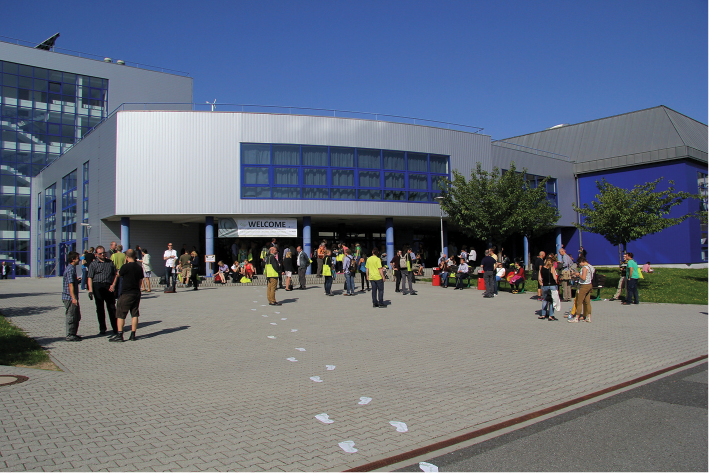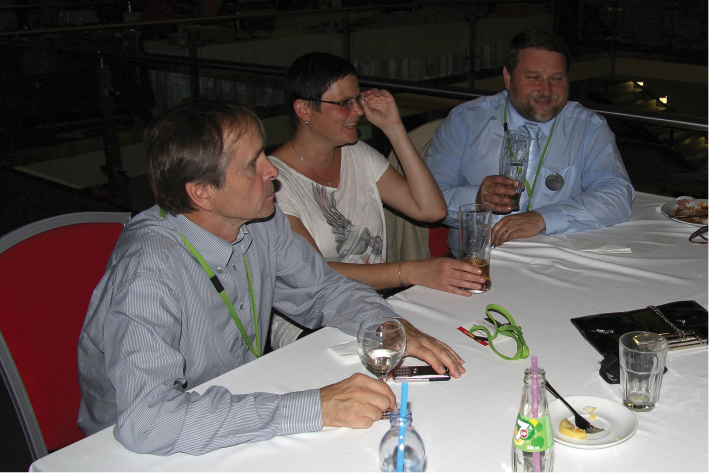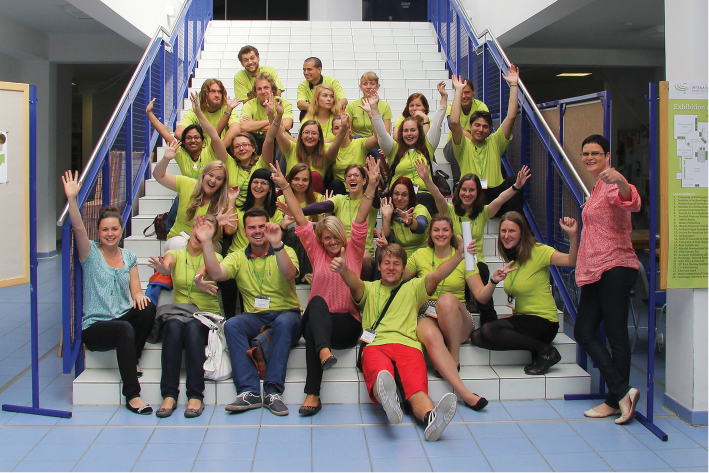
Volume IV ● Issue 2/2013 ● 129–131
Editorial IANSA 2/2013
The Scientific Approach in Current Archaeology. Reflections on the 19th Annual Meeting of the European Association of Archaeologists in Pilsen 2013
Jaromír Beneš
Archaeology has traditionally been perceived as a historical discipline. This view still continues to be held particularly by researchers in Central and Eastern Europe. It would generally seem to be a valid statement. Archaeology creates, along with history, an optimal conjunction although history is in comparison with archaeology limited by the scope of written and other “narrative” records. The primary limitation of history is implied by the period when the written sources begin. This is too late in fact to intercept the basal processes in human development. Such an operational field could only be made in discourse on current archaeology, the space and time depth of which is practically unlimited. Its constraints actually reside in something else. The traditional layout of archaeology deals with artefactual structures which usually reflect human behaviour in space and are ordered in time. Such an approach is extremely persistent among archaeologists with a traditional Central European education. In such a concept, archaeology plays a supporting role despite the fact that the publication of any archaeological field research needs at present a broader association with a series of proper analytical methods.
It is still somewhat unusual for many archaeologists to organise their knowledge based on scientific methodology, which is formally expressed by the ordering of a scientific paper. Is it necessary for the entire scope of archaeology? This is certainly not the case since archaeology as a discipline at present is extremely complex and cannot merely work within the narrow limitations of scientific evidence. There are various archaeologies and one cannot argue that one certain approach is valid and another in contrast invalid. If one needs reliably validated evidence in material research, however, a proper scientific order of argumentation is truly necessary and only the possibility for operating in archaeological science.
Our journal provides a balanced solution. In our view, the natural sciences in archaeology such as archaeobotany, archaeozoology, bioarchaeology and many others do not support the role of archaeologists as collectors of scientific expertise, but provide an equal challenge for the above-mentioned disciplines involved in archaeological explanations. An archaeobotanist can in such a model, for instance, be the leader of a research and publication team if the structure of the findings demands an archaeobotanical explanation as a crucial way. This is not only the case with archaeobotany, but such an approach concerns all disciplines associated with archaeological research. Archaeology based on artefact analysis in space cannot automatically own a licence as the research leader for investigation of the human past, but only in relation to other disciplines. This is the key approach for current research as well as for the future.
IANSA journal is based on international efforts. The journal is published, however, in the Czech Republic. One of the most important archaeological conferences took place in this country in 2013. During the 19th Annual Meeting of the European Association of Archaeologists 2013 in Pilsen results of current archaeology were presented clearly demonstrating a high level of complementarity in archaeology. Looking back, one interesting remark could be connected with this largest European annual enterprise, which welcomed almost 1,300 researchers from all over the world. The congress covered the scope of the scientific methodology which was used in numerous papers in many sections. One of the most popular topics in Pilsen concerned archaeogenetic research and the origins of genetic variability among prehistoric Europeans. It was truly impressive to see how robust the available data from the prehistoric cemeteries are and how it generally influences current prehistoric research. Genetic investigations in the area of burial archaeology are however, not the only signs of the scientific approach. A methodology typical for exact disciplines seemed to pervade the majority of the sections. This is good news for our journal.
Our efforts are not on an isolated “neo-processual” late aberrance, but instead on a regular path towards credible results. There are very few other journals which support a scientific methodology such as ours. There is for example the Journal of Archaeological Science, Geoarchaeology, Archaeometry and a very small amount of others. We hope that exact methodological approach deeply and permanently affects the basis of archaeology itself. On the other hand, and this should be clearly stated, we only support the methodological tools, not the principal goals in archaeology itself. Our discipline has to be open to “softer” social and historical methodologies, which frequently make use of holistic ways of argumentation. Our aim in IANSA journal has been clearly declared, however, to promote the application of natural sciences in archaeology. We intend to maintain this position.
We also took advantage of the high concentration of scholars in Pilsen during the 19th Annual Meeting conference. The combined meeting of the Advisory and Editorial Board was carried out during the conference. People from various parts of world came together and discussed future issues of the journal. Welcome words by J. C. Chapman (Chair of the IANSA Advisory Board) and by J. Beneš (Chair of the Editorial Board) were presented. O. Mlejnek (executive editor) explained the content of the IANSA current and following issues. Our IT specialist M. Bastl presented the news related to the electronic version of the journal and visitor statistics, while J. Beneš showed the IANSA profile on www.academia.edu where over 400 journal followers meet from all over the world. The IANSA pages are frequently visited either directly on www.iansa.eu or via the academia page. The number of visitors is in the thousands, reflecting the growing influence of the journal. An important point in our efforts has been the integration of the IANSA journal into the areas of several international web databases. We hope that the results of this principal aim will be visible in the year 2014.
Figure 1. Venue of the 19th Annual Meeting of the European Association of Archaeologists in Pilsen, Czech Republic. Photo Jan Tauber.
Figure 2. Conference session in honour of Professor Evžen Neustupný. From left: Evžen Neustupný, Ladislav Šmejda, Jan Turek, Kristian Kristiansen. Photo Jan Tauber.
Figure 3. Professor Martin Gojda (left), Chair of Pilsen Conference, with some members of the local organising committee Magdalena Turková and Jan Turek. Photo Jan Tauber.
Figure 4. Supporting student staff with the young researcher team (Tereza Krištufová – left, Dagmar Franzeová – mid, Magdalena Turková – right). Photo Jan Tauber.



